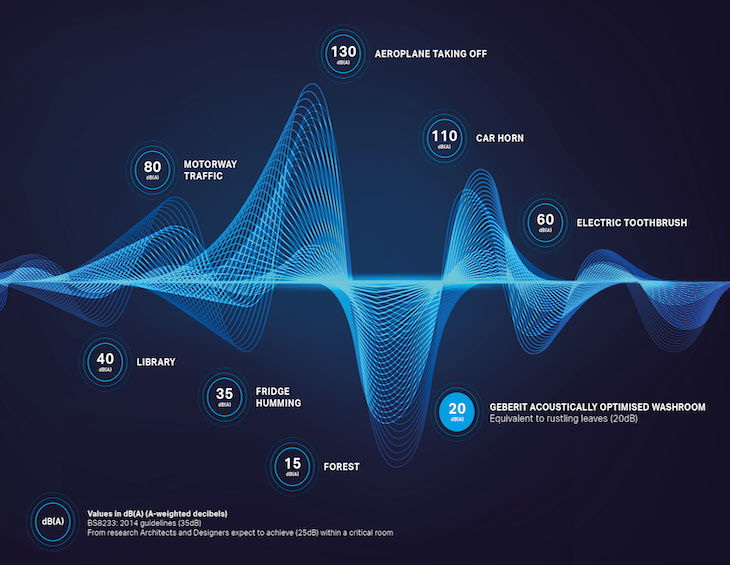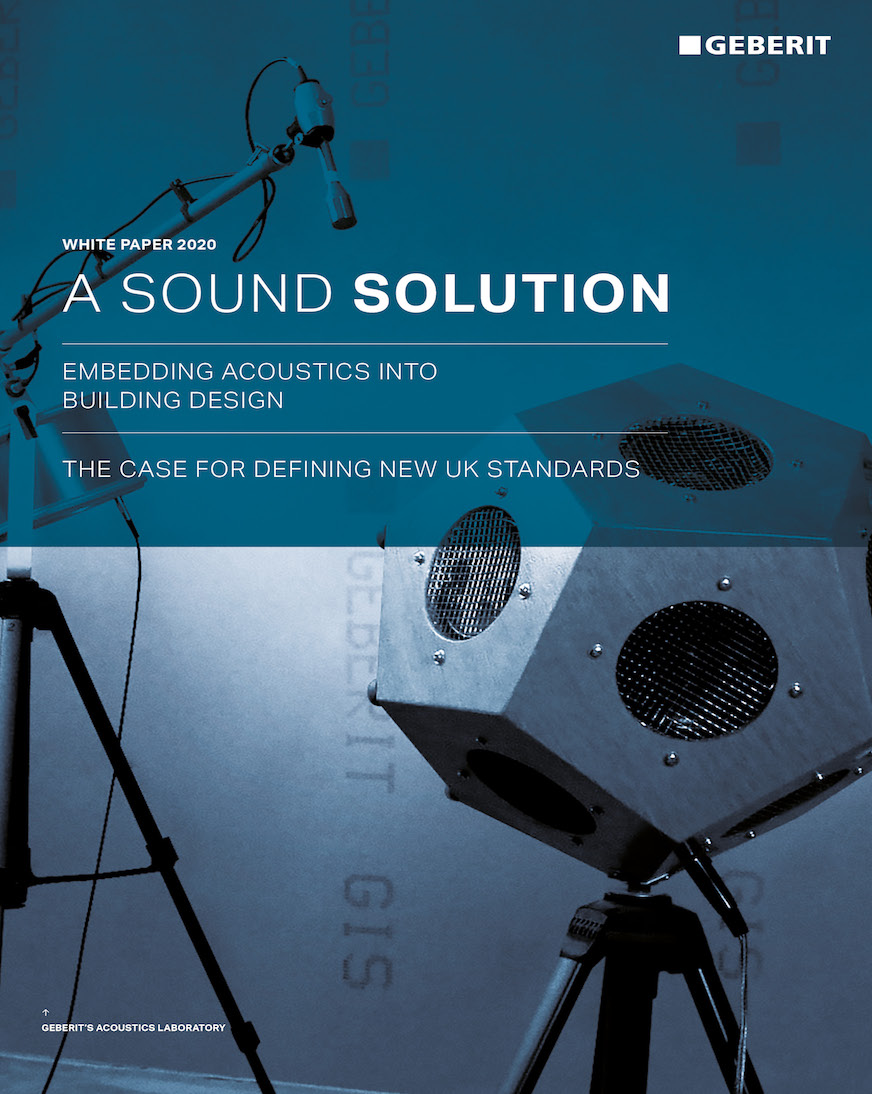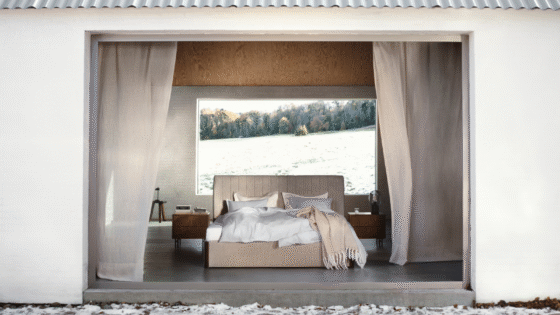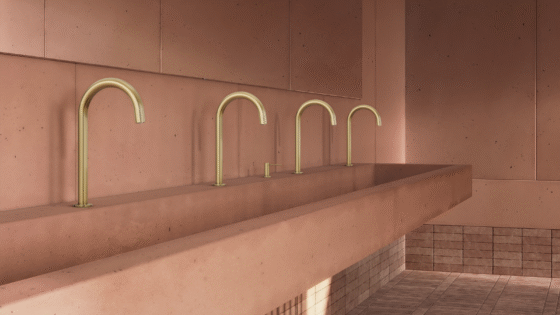Awareness of mental and physical wellbeing has never been greater, yet many of us still struggle to find the time, freedom and sanctuary we need to recover from the stresses of everyday life – until, that is, we check into a hotel. Sophie Weston, channel marketing manager at Geberit, explores the role that architects and designers have to play in sensory bathroom design in hotels, and examines, in particular, the issue of noise and its impact on our wellbeing…

According to Geberit research, nearly three quarters of us struggle to find the time to relax with the same amount telling us that they felt so stressed that they have been overwhelmed or unable to cope. It’s a damning snapshot of modern lives dominated by technology and our ‘always on’ culture. Good design is, therefore, increasingly less about how spaces look and more about how they make us feel.
Reimagining a new hotel space
We know from our research that the bathroom is the most popular place of escape from the pressures of modern life so perhaps, then, the role of the bathroom in hotel design should be even more crucial. A hotel bathroom or washroom should no longer be designed as a purely functional zone but as a relaxing space to unwind and one that appeals to all our senses. To do this, designers must understand the four key senses of auditory (sound), visual (sight), kinaesthetic (touch) and olfactory (smell) before applying this understanding to specify the bathroom solutions that can help mitigate the impact of each.
Solutions to a multi-sensory approach
There are many innovations and product solutions to help meet the demands of the senses in hotel bathroom design. For example, preventing overstimulation of the visual sense through simple orientation lighting, which helps preserve the sanctuary of sleep by eliminating the need to switch on additional lighting. Manufacturers have also developed solutions to support designers in meeting kinaesthetic demands, such as clean lines, sleek corners and the use of natural materials. Meanwhile, modern, efficient odour extraction technologies address the challenge of smell. Yet, it was the role of auditory that we were particularly interested in when we undertook a YouGov survey to establish the impact of unwanted noises on our wellbeing.
Noisier than ever?
Our ears work even when we’re asleep, with the brain continuing to process the sounds it detects, albeit in a different way. And when we are awake, we need to consider the impact that irritating sounds could have on our mental wellbeing – a dripping tap or flushing toilet, for example.
We surveyed more than 2,000 adults across the UK to get a greater insight on the impact of unwanted internal noise and, in particular, bathroom noise. As part of this research, we found that almost a third (30%) of respondents who had stayed in a hotel in the last 12 months had been disturbed by bathroom noise at night. What was clear, too, from our research was the impact of this; more than half (51%) of respondents cited unwanted internal noise as having a negative impact upon their wellbeing.
Noise is clearly an issue. So what solutions are available for architects and designers to meet these very obvious challenges?
From acoustically optimised pipework with noise reducing properties, to decoupled pre-walls for added noise insulation, manufacturers are constantly innovating sound-proofing solutions that help to mitigate the age-old issue of sound from flushing toilets and other unwanted bathroom noise. Acoustics is one of Geberit’s ten core research areas and our unique building technology and acoustics laboratory enables our team of acousticians to research products and technologies.
Wall-hung toilets with concealed cisterns and pre-wall frames decoupled from the construction, for example, prevent noise from travelling down the wall and through the floor. Opting for a toilet mounted using a frame such as Geberit Duofix can almost halve the decibels produced by a traditional floor standing toilet.
Likewise, sound optimised drainage piping can reduce noise transfer from flushing water, washbasins or showers. Geberit Silent db-20 is manufactured with mineral reinforced polyethylene for a denser materials and fittings to dissipate noise at impact zones.
- Image caption: White paper front cover | Image credit: Geberit
- Image caption: Duofix concealed cistern Sigma21 with iCon | Image credit: Geberit
Selling experiences
As the trend for selling ‘experiences’ and creating an escape for guests continues, so too does the value of creating a unique, positive guest experience to help build stronger memories and ensure customers keep coming back.
As we focus ever more on physical and mental health and wellbeing to help combat the stresses of modern life, it’s clear that good design in the bathroom or washroom space could be the key to unlocking better lives. And it is critical for designers to be aware of this opportunity.
Geberit is one of our recommended suppliers. To keep up to date with their news, click here. And, if you are interested in becoming one of our recommended suppliers, please email Katy Phillips by clicking here.
Main image credit: Geberit





